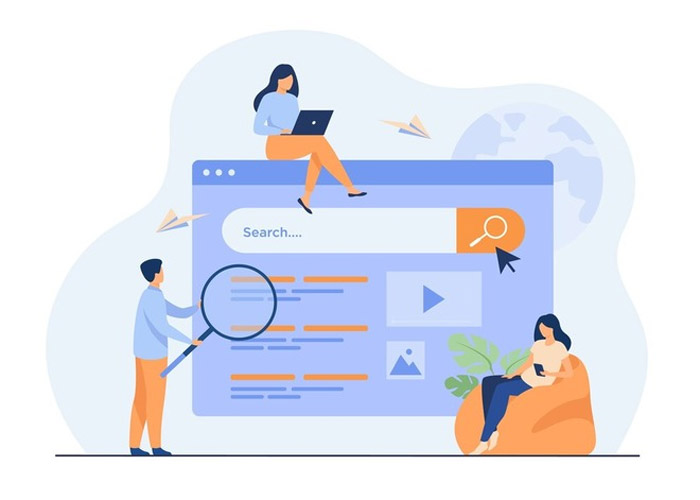
UX and SEO as Your Key Players: 8 Tips to Web Success Blueprint
As the digital business environment changes, so too does the consensus for the most efficient SEO tactics. WordPress, a popular content management system (CMS) can offer almost innumerable useful tools and plugins that can be used to enhance the position of your site in SERPs.
However, to sustain a competitive advantage in 2024, one has to establish how the aforementioned resources could be leveraged effectively. As we continue with the methods of WordPress SEO, this post is going to explain to you the basic steps you require to undertake when optimizing your site.
SEO refers to the process of boosting the chances of a particular website appearing on a search engine’s results page when someone searches for a product or service. The complex framework of WordPress along with a variety of options in the plugin repository makes it effective in SEO.
The new approach to centered search engine optimization for WordPress in the year 2024 requires balanced technological optimization, content quality, and user requirement considerations. It is high time that we determine how this should be done correctly so that we can achieve the intended purpose.
Website success is the name of the game in the digital age; it's not just a nice bonus. As a veteran or a startup web designer or digital entrepreneur, you are well aware of how tough it is in this environment.
Choosing the Right SEO Plugin:
“The decision on which SEO plugin is reliable and efficient is the first step to take in the process of optimizing your WordPress site.
The antecedent tools like Yoast SEO, All in One SEO Pack, and Rank Math also possess some features enabling SEMM management to be effective and productive.
Unsurprisingly, many of these plugins include features specifically related to keyword optimization as well as the management of meta tags and also generate XML sitemaps and other useful tools” says, Derek Bruce, Director of the Mental Health First Aid Course.
To determine the correct plugin it is necessary to define the features you’re going to need and get to know the functions that are offered by each plugin to most effectively use the plugins.
search engine optimization plugins help to make it easy to implement the practices that are involved in the optimization process since they act as an interface through which the optimization and administration of the website can be done.
Conducting Comprehensive Keyword Research:
“Because keywords remain an important part of search engine optimization, the research of the keywords must carry on.
Even using normal search engines there is so much that can be done, for instance, to determine which keywords are relevant one can use Google Keyword Planner, SEMrush, as well as Ahrefs.
These tools help in identifying the keywords used in the search box that many people search but few people are offering the product or service.
Specifically, in 2024 and beyond, there is a need to focus on long-tail keywords, which are relevant to the motives of the target audience.
The moderate level of competition and relevance makes the long-tail keywords easier to rank and secure a higher rank for them” says, Mark McShane, Digital PR Agency Owner, Cupid PR.
Using the aforementioned keywords in your content, headings, meta descriptions, and URLs without the need for stuff excessively makes sure that your website is optimized according to what consumers are looking for.
This in turn means that your website is likely to feature high on Search Engine Results Pages (SERPs) ought to a keyword linking to your site be searched.” Mark adds.
Optimizing On-Page Elements:
“It is important to optimize individual pages for on-page search engine optimization to rank higher or direct more of the right kind of visitors to the website.
Title tags, meta descriptions, header tags, and picture alt text are examples of the component elements that are deemed to be a core part of on-page. Each page needs to possess an informative and witty title tag, the aim of which is to include the target keyword.
Meta descriptions are not considered as the ranking factors, but as they affect the CTR, they should be concise, and accurate. Using H tags (H1, H2, H3, etc) properly assists in structuring your material and as a result is more conveniently understandable from the side of the people and engine.
Furthermore, as with images, it is beneficial to write alt texts in a less descriptive way which not only benefits accessibility but also provides search engines with more information about the content of your pages.
When taken cumulatively, these components give your web page’s search engine optimization or SEO a boost because every page is made both fully optimized and friendly for the user” says, Youssef Hodaigui, Founder of Mindflow Marketing
Enhancing Site Speed and Performance:
“The pace at which a certain site operates is also among the ranking factors and also influences the performance that the clients get to experience.
This way one can analyze the output from your website for your work or abort it in a way as to recommend how to improve it This can be done by utilizing any of the following tools; Google PageSpeed Insights or GTmetrix.
Resizing and optimizing images by reducing their size and therefore the loading time of a website benefits from one of the most effective methods of speeding up a website.
Specific caching plugins available include W3 Total Cache as well as WP Super Cache which functions in a way to store a copy of your website that is likely to load very fast in case the true copy takes a long time to load” asserts, Daniel Foley, Founder of Daniel Foley SEO Consultancy.
Another thing that helps in relieving the burden of performing on your website is that you should also try to minimize the number of plugins, and the presence of only essential plugins. The boost in speed also improves SEO, and it not only helps to maintain customers’ interest but – which leads to lowered bounce rates and higher potentiality of conversions.
Creating High-Quality Content:
“SEO is the process of Effectively making an optimized website appear more often in search engine results and this can only be done by having quality, useful, and relevant content on the websites.
Ideally, as the target audience for your website, the content that you post should meet the demands of your audience as well as their interests. This can be in the form of blog posts, articles, videos, infographics, advertisements, and any other form of content that is created online. While the cyclical nature of the information is most certainly useful, so too is the ability to ensure that new material, which is well-researched interesting, and consistently updated is going to be relevant over a long period.
The web link search engine will be far more precise as to what it offers a user in 2024; consequently, content creation shall always aim to be informative and engaging” shares, Gemma Hughes, Global Marketing Manager at iGrafx.
To refine your search engine results, you can create good content that not only serves the purpose of improving your link juice but also earns the trust of your audience, thus giving them a reason to visit your website again and share it on their favorite social networking platforms.
Implementing Internal Linking:
“The internal linking, in general, can be more even and search engines have a better understanding of a site’s navigation process.
It helps in making navigation easier and also provides a better experience in the content by linking it to the related pages. By incorporating keywords into the anchor text, both users of the sites and the search engines can gain the full context of the link.
Proper internal linking guides users to other related or perhaps relevant pages in your site that should be of interest to the users extending their time on your website.
In addition, it helps search engines find content on the internet and even improve the relations between the various web pages, which in turn helps improve the indexing and ranking systems” says, Sasha Quail, Business Development Manager of claims.co.uk
Securing Your Website with HTTPS:
“Users and search engines, both, are concerned about the parameter of security in equal measure. Obtaining an SSL certificate and implementing it for your WordPress site is a fundamental process that needs to be performed to ensure that you have implemented HTTPS protection.
This is good news as most hosting providers offer Free SSL certificates, while there are plugins like Simple SSL that make the implementation process easy. Not only does using HTTPS help to protect the information provided by a user with the help of encryption of the communication between the user and the server, which is, in turn, beneficial for gaining the user’s confidence; at the same time, it also works for establishing the credibility of a certain site.
However, before moving forward, there is more good news as secure websites are preferred by search engines, indicating that HTTPS can be beneficial when it comes to your rankings.
Security of your website is considered of definite importance, in this world, where scams and viruses adorn the Internet highways, is crucial for building a good reputation” shares, Tim Parker, Director at Syntax Integration.
Leveraging Structured Data and Schema Markup:
“Two methods make it easier for search engines to rank the content of your website and improve the appearance of your website on SERPs: structured data and schema markup.
Solutions such as Schema Pro or Yoast SEO can help you put schema markup to your pages, which means that by doing so, you can gain a rich snippet, which may comprise features such as star ratings, events, and commonly asked questions (FAQs), all of which add up to increased rates of click-through.
Apart from the attractiveness of the listings, each rich snippet gives consumer-specific information right on SERP, making your listings more attractive and helpful to consumers, expresses, Ben Flynn, Manager at Homefield IT.
While adding more exposure and involving more people with your content is directly related to structured data implementation you can enhance SEO performance dramatically.
Monitoring and Analyzing SEO Performance:
According to Adam Crossling, Marketing & New Business Director at zenzero, “It is crucial for the continuous monitoring and analyzing of the performance of your website to determine whether indeed the optimization you are implementing is working.
Applications like Google Analytics, Google Search Console, and SEMrush provide important information and statistics on the traffic portions that your website receives, its users and their interactions, and their positions in the rankings.
By partnering with a reliable SEO service provider, businesses can enhance their monitoring efforts, ensuring that key metrics are being tracked and optimized efficiently.
It means that you will be able to distinguish which of the identified techniques work effectively and which of them need adjustments if the values of these measures are defined regularly.
Through monitoring SEO performance one can keep tabs on the process since it allows one to decide proactively, which is good especially if you need to be constantly improving your processes to get even better results.”
How to Use UX as the Key Player in SEO
If you plan on experiencing success, then you must have partnered with User experience (UX) as well as Search engine optimization (SEO).
You may even need to work with a custom web development firm to ensure everything is done correctly.
Think of UX and SEO as the main players in the high-drama show taking place on your site.
However, they are not just about making your site attractive but also play a major role in turning it into a celebrity on the large digital scene.
Therefore, this paper will focus on the reciprocal tie between UX and SEO and explain why each one is significant for winning in the web world.
User Experience and Its Impact
User experience is fundamentally about designing a user-friendly and aesthetically appealing digital environment. Making your website enjoyable is an art that goes beyond just looks. Key aspects include:
- Website Design. Your website's appearance is essential. First impressions are good-looking and tidy. For this, you can consider solutions like MEC or Deep Theme to make the job easier.
- Navigation. Consider this to be the website's road map. It needs to direct users to their intended location easily.
- Content. The heart of your website is high-quality content that educates, engages, or entertains your audience.
Linking User Experience with Happiness
The answer to the question “Does User Experience matter?” is a loud “yes.” It's essential to keep your audience interested and satisfied, which goes beyond simply making your website visually appealing. The numbers don't lie:
- A well-designed user interface can increase website conversion rates by up to 200%, according to Forrester Research research.
- According to Adobe research, 38% of users will stop visiting a website if the content or style is unpleasant.
- 53% of mobile consumers leave websites that take longer than three seconds to load, according to Think with Google.
Fundamentally, a robust user experience results in more user happiness, longer visitations, and more conversions.
In the realm of web success, UX (User Experience) and SEO (Search Engine Optimization) are indispensable key players, especially in the fintech domain.
Crafting a seamless UX design ensures that users can easily navigate through financial platforms, enhancing engagement and trust.
Integrating intuitive interfaces, clear information architecture, and responsive design optimizes user interactions, ultimately driving conversions and retention.
Concurrently, prioritizing SEO strategies such as keyword optimization, content quality, and mobile-friendliness enhances visibility on search engines, attracting organic traffic and establishing authority in the competitive fintech landscape.
The aim of Fintech software is to make financial transactions more efficient, secure, and convenient for both businesses and consumers
By synergizing UX and SEO efforts, fintech companies can create compelling digital experiences that not only resonate with users but also amplify their online presence, fostering long-term success and growth.
The Fallout of a Poor UX
A website with a poor user experience will suffer, just as a five-star restaurant can lose clients because of delayed service or a perplexing menu.
The results are low user engagement, low conversion rates, and high bounce rates (visitors who leave the site rapidly).
Google also pays attention. Search engines receive signals from high bounce rates and little user interaction that your website may not be worth advertising.
We'll discuss SEO in more detail when we get there.
Decoding the World of SEO
Imagine you've just finished writing a fantastic book (your website), but it's hidden on a far shelf. If it's not there, nobody will be able to enjoy it. Users can find your website thanks to SEO.
Key Elements of SEO
It entails optimizing your website so that it shows up in search results when someone searches for a subject associated with your content.
Here are the vital aspects of SEO:
- Page optimization (On-Page). This entails aligning the content, meta tags, and pictures with pertinent keywords. In essence, it aids Google in comprehending the subject matter of your material.
- Keywords. These are the essential keywords or words that users enter into search engines. Your content needs the correct keywords to rank well in the proper places.
- Backlinks. Good backlinks from other websites tell Google that your website is trustworthy and should be highlighted.
Constantly Changing SEO Algorithms
It is a dynamic field. The excellent Google continuously improves its algorithms to give users the finest results. User experience has become increasingly important in recent years.
Google tries to give people access to useful websites that offer a smooth surfing experience.
If your website provides valuable, user-centric content and ensures visitors don't click away in frustration, Google smiles upon you.
How Important Is SEO
Why should you be concerned with SEO? Because it serves as a starting point for organic (free) traffic. The success of your website depends on whether it appears on the first page of search results.
Recent research reveals:
- The average click-through rate (CTR) for the first result in Google's organic search results is 39.8%. The percentages substantially decrease after the second outcome, which receives 18.7%.
- Search engine users overlook paid adverts to a 70–80% degree and concentrate on organic results.
In essence, SEO is your pass to the first page of search results, where most online surfers begin so Improving SEO is of vital importance.
How UX and SEO Work Together
Together, UX and SEO may help your website visitors have a seamless experience.
UX Improves SEO
User experience elements such as clean design, easy navigation, and exciting content ensure that visitors are always happy.
A satisfied guest is most probable to stay on, interact with your content, and purchase your products, subscribe to your newsletters, or just be involved.
It also reduces bounce rates and boosts user engagements that are among many factors Google regards important as a sign of a top notch site.
Visitors like user friendly websites, responsive on a mobile phone, fast loading pages also google likes it. The search engine algorithms of Google reward sites with ease of use and satisfaction.
This means that the website should be well structured and thus, Google is most probable to rank it high on the search engine listings.
Content: The Bridge Between UX and SEO
The aesthetics of the site, functionality, and what it communicates are all critical. Yes, your content should be educational but entertaining and optimized for search engines.
For this, it is important for you to find a perfect equilibrium between providing value to your clients and utilizing Google’s language.
This is how you do it:
- Keyword Research. Find the keywords or phrases that your audience uses in searching for their information about you. You could also make use of a tool such as Google‘s Keyword Planner in order to identify suitable keywords.
- Quality Content. Still, content is king. It should also come in good English, helpful and educative in nature to all your site visitors.
- Optimized Headings and Meta Tags. Be mindful when using keywords on your headings and meta tags. Google is equipped with advanced algorithms that detect the presence of keyword stuffing.
- Multimedia Elements. Make use of pictures and videos where applicable. They could enhance the appeal of your content and still keep consumers interested.
This is a mutually beneficial partnership in which content plugs the gap. Providing value and information to your customers helps both you and search engines (that rank based on keywords and quality).
Technical SEO and UX Improvements
There is more than aesthetics and keywords involved in the relationship between user experience (UX) and search engine optimization (SEO).
It gets into the specifics of technical SEO and UX improvements that significantly impact your website's performance.
Speed
Well, frustrated internet users may result from your website's poor loading speeds.
Site performance is essential for both UX and SEO; it's not only a convenience. The wise judge of search results, Google, is concerned with loading times. So, we are here to let you know how to speed up WordPress website.
Websites that load quickly score higher in search engine results, earning them more brownie points. Users have also become accustomed to the immediate satisfaction offered by the Internet.
If your website takes a long time to load, visitors will immediately press the return button, increasing your bounce rate.
Mobile-Friendly Magic
Mobile-friendliness is now a must rather than an option as mobile devices take over as the primary entry point to the digital world.
Mobile-friendliness is now a ranking criterion on Google due to this adjustment. You're simply shutting out a sizable portion of your audience if your website isn't responsive or mobile-friendly.
Resizing text and graphics to fit a smaller screen is not the definition of mobile-friendliness.
It's about giving users who access your site through their smartphones and tablets a seamless and pleasurable experience.
Your users and search engines will be happier if this mobile experience is as seamless as possible.
Web Security
HTTPS, which stands for secure browsing, is crucial for your users' trust and SEO rankings. Google prioritizes websites that take user security seriously.
SEO Boosters: Structured Data and Schema Markup
Let's now examine a somewhat more sophisticated but potent pairing: structured data and schema markup.
Search engines may access structured data thanks to structured data. When you add structured data to your website, search engines can better understand your content.
Rich results or snippets in search engine results pages (SERPs) are the outcome of this expertise. These snippets offer consumers more thorough details about your content.
While search engines are full of valuable public information, gathering it may help companies stay competitive in the market, rank higher, and bring more organic traffic to their websites.
You can use SERP api to collect timely and reliable search results data from the different search engines.
For instance, if you use structured data and have a recipe on your website, Google can show it in the search results together with cooking time and star ratings. Before they even click on your link, users learn more.
Contrarily, schema markup is a specific vocabulary of tags (or microdata) that you may include in your HTML to enhance how your website appears in search results.
Bridging the Gap with Content Strategy
As much as “content is king,” content actually wears two crowns in digital marketing: one for UX and one for SEO. Let's investigate the power of content and how it unites these two crucial components.
Content: The Lifeblood of Your Website
Your website's content is its heartbeat. Your visitors will be interested and informed by the articles, blog posts, pictures, videos, and infographics you provide.
Material is what draws visitors back to websites and persuades them to take action, such as buying something, sharing your material, or signing up for your newsletter.
When it comes to SEO, content is the primary technique to target pertinent keywords and phrases that will help your website show up in search results.
Search engines invariably search for topical, quality, and optimally indexed information.
On the other hand, do not think that you have achieved your final objective by just filling a page with words and inserting some high ranking keywords.
Unlike what has been portrayed here, Google’s algorithms are more advanced, and they prefer content that appeals to your audience’s needs.
Using User-Centric Content
Your content must be user-centric if you want to succeed in the challenging relationship between SEO and UX.
This means that it also takes into account the needs of the actual people who visit your website, who are more significant than search engine algorithms.
Let's use an actual case to demonstrate this. Think of running a fitness website.
You compose a post that is educational and well-structured, and it contains photographs and videos showing the workouts to achieve your goal of ranking highly on Google for the phrase “best workout routines.” Following thorough keyword analysis, you have incorporated the phrase “best workout routines” whenever appropriate.
Now, when consumers search for this phrase, they not only see your page in the search results but also an interesting article with helpful information and visual aids when they click. This is the kind of thing Google adores.
The search engine juggernaut gives your website higher rankings because it understands that your content meets user wants. As a result, more users will find your material.
Analytics and KPIs for Measuring Success
Key Performance Indicators (KPIs) and analytics now become essential. You may evaluate the results of your work and guide your website toward success with these priceless tools.
Why KPIs and Analytics Are Important
Analytics gives you vital information about how your website is doing. You can improve your UX and SEO strategy by looking at user behavior, traffic sources, and other pertinent information.
The specific measurements you monitor to gauge your achievement are key performance indicators (KPIs).
They act as checkpoints along your route, assisting you in determining whether your website is accomplishing its goals. Bounce rates, click-through rates, conversion rates, and other metrics can be among them.
Exploring tools like Smartproxy can enhance your SEO efforts by providing valuable insights into SERP results and competitor analysis.
Data-Driven Decisions
You may decide with confidence on your website's layout, content, and user experience using analytics and KPIs.
For instance, you can look into why users leave a website so rapidly if you see that it has a high bounce rate. Is the page taking a long time to load, or is the material boring?
This information can direct advancements.
Analytics on the SEO front may show you how your website ranks for particular keywords and how much organic traffic it is getting. If you notice that a few keywords do very well, you might concentrate more on creating content around those subjects.
The Analytics Toolbox
A good point of entry would be Google Analytics. It is a comprehensive suite of tools allowing you to track and scrutinize the actions of a website visitor.
As such, you will be able to keep a tab on user demographics, traffic, and efficacy of certain sites.
SEO tools like Moz or SEMrush provide valuable data. You may track your SEP through the use of these tools and see if your site is performing better or worse than the competition.
Always remember that data collection is key, as well as comprehension of what you’ve gathered. Search for trends and connections.
Monitor the outcome of any changes you make in UX optimization or seo for your site. Overtime you will know more about your users as well as what is best for them.
Overcoming Challenges and Pitfalls
Obviously, it is not easy since these two terms present some obstacles. These symptoms must be recognized and addressed in order to sustain a healthy symbiotic relationship.
The Pitfall of Keyword Stuffing
The risky practice of keyword stuffing can be detrimental to both user experience and SEO. In an effort to trick search engine rankings, it entails stuffing your material with keywords.
This results in uncomfortable, difficult-to-read content, and search engines are now aware of these tricks. Websites that use keyword stuffing suffer consequences.
The answer is straightforward: produce valuable, high-quality content that naturally incorporates keywords. Prioritize the user's needs and provide material that answers their search questions.
The Challenge of Intrusive Pop-Ups
Pop-up windows can be both beneficial and annoying. They can gather helpful information or capture leads when used sparingly and carefully.
However, they become a burden when intrusive and ruin the user experience.
Unwelcome interstitials or pop-ups have come under fire due to Google's Page Experience upgrade. Ensure your pop-ups are pertinent and non-intrusive to achieve the correct balance.
Without interfering with the primary material, they ought to enhance the user experience.
The Maze of Bad Navigation
Users will feel irritated and depart if it is unclear or chaotic. The adverse outcomes are high bounce rates and short dwell durations.
Clear menu structures, breadcrumbs, and a user-friendly layout are all necessary for effective navigation. Users should have little trouble finding what they're looking for.
Google also favors websites with effective navigation because it generally enhances user experience.
Every action you take to improve the user experience helps with better SEO and, eventually, the success of your website.
Conclusion
Optimizing your WordPress site for SEO in the year 2024 requires constant technical SEO, excellent content, and user-oriented tactics in a single mold.
Organic traffic means there is no need for additional and constant promotion, that is why, to increase the visibility of your website and attract more visitors, it is important to choose the right SEO plugin, conduct extensive research on keywords, get familiar with on-page elements, work on your site speed, create quality content, optimize internal linking, ensure HTTPS protection, use structured data and constantly monitor your results.
Stay up-to-date with trends that apply to the specific field of SEO in particular and work to refine the strategies and methods that are used to remain one step ahead of your competitors within the modern world wide web environment.
Thus, providing that your WordPress site is indeed growing and reaching out to more people, you can be certain that your website remains pertinent to the market.
More than ever, there must be a strong connection between search engine optimization (SEO) and user experience (UX).
Websites that put both factors first are considerably more likely to succeed rather than just survive.
An excellent user experience on a website increases the likelihood that it will perform well in search results.
When it comes to elevating your online presence and achieving top-notch search engine rankings in Utah, look no further than the Best Utah technical SEO Agency.
Renowned for its expertise in search engine optimization, this agency combines cutting-edge strategies with a deep understanding of the local market to deliver exceptional results.
With a dedicated team of SEO professionals, they tailor their approach to meet the unique needs of businesses in Utah, ensuring maximum visibility and targeted traffic.
From comprehensive keyword analysis to strategic content optimization and link-building campaigns, the Best Utah SEO Agency employs a holistic approach to enhance online performance.
Trustworthy, results-driven, and committed to staying ahead of industry trends, this agency is the go-to partner for businesses seeking to thrive in Utah's competitive digital landscape.
On the other hand, an SEO-optimized website typically results in a better user experience because it is organized, valuable, and informative.
Keep this relationship between UX and SEO front and center in your plan if you're creating a website, optimizing an existing one, or just trying to succeed online.
Analyze your progress with analytics, and enjoy the challenge of avoiding traps. Ultimately, you'll benefit from improved rankings, increased traffic, and content users. Best of luck!
Recommended Posts

Boost Event Visibility with MEC’s Top SEO Features in 2025
February 3, 2025

12 Best Google Chrome Screenshot Extensions for 2025
July 30, 2024






